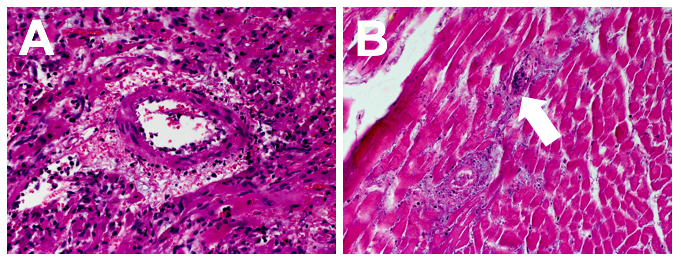Deleting LAG-3 Accelerates Cardiac Allograft Rejection and Augments T Cell Memory in Mice.
1Center for Transplantation Sciences, Massachusetts General Hospital, Boston, MA
2Yale School of Medicine, New Haven, CT
Meeting: 2017 American Transplant Congress
Abstract number: B7
Keywords: Graft survival, Heart, knockout, Mice, T cells
Session Information
Session Name: Poster Session B: Acute and Chronic Rejection
Session Type: Poster Session
Date: Sunday, April 30, 2017
Session Time: 6:00pm-7:00pm
 Presentation Time: 6:00pm-7:00pm
Presentation Time: 6:00pm-7:00pm
Location: Hall D1
Purpose: Lymphocyte Activation Gene-3 (LAG-3) expresses a transmembrane receptor on activated immune cells such as T cells, NK cells, and plasmacytoid dendritic cells. It is involved in effector and regulatory functions. Here we examine the effects of blocking the LAG-3 pathway on cardiac allograft rejection.
Methods: DBA/2 donors (H2-d) cardiac allografts were transplanted without immunosuppression into C57BL/6 wild-type (WT) controls, LAG-3-/- (KO) on a C57BL/6 background, and C57BL/6 treated with LAG-3 neutralizing antibody. Memory T-cell secretion of IFN-g to DBA/2 antigens was assessed via ELISPOT.
Results: Allografts in WT recipients rejected on average in 8.1 days. Allografts in LAG-3-/- KO recipients rejected on average in 6.3 days (p=0.03*). Antibody-treated recipients rejected on average in 7.0 days (p=0.27). IFN-g secretion by LAG-3-/- KO splenic T cells was on average 2.6-fold higher than WT T cells across all time points (p=0.005**, Table 1). Rejected allografts in LAG-3-/- KO recipients showed focused endothelial lymphocytic infiltration that was magnified at 1 week post-rejection (Figure 1).
Table 1. Antigen-Specific Increased Memory T-Cell IFN-g Response
| KO/WT Ratio | Mann-Whitney U Test (KO vs. WT) | |
| 1-3 Days | 2.7 | P=0.05* |
| 1 Week | 1.6 | P=0.10 |
| 4 Weeks | 2.8 | P=0.05* |
| Total | 2.4 | P=0.005** |
*5% level significance
**1% level significance
Figure 1. H&E Comparison of WT and KO Grafts At 1 week post-rejection, WT recipients show diffuse intercellular infiltration with patent vessels (A) while LAG-3-/- KO recipients show lymphocytic infiltration of endothelium and vascular collapse (white arrow) (B). H&E, 40x.
At 1 week post-rejection, WT recipients show diffuse intercellular infiltration with patent vessels (A) while LAG-3-/- KO recipients show lymphocytic infiltration of endothelium and vascular collapse (white arrow) (B). H&E, 40x.
Conclusions: The absence of LAG-3 leads to slightly faster allograft rejection, with an increase in the T-cell memory response to donor antigen. These findings suggest that maintenance of surface LAG-3 protects H-2 mismatched cardiac allografts and could be an important target for immunosuppressive therapy.
CITATION INFORMATION: Erfe J, Yang C, Ndishabandi D, Rosales I, White R, Russell P, Colvin R, Madsen J, Alessandrini A. Deleting LAG-3 Accelerates Cardiac Allograft Rejection and Augments T Cell Memory in Mice. Am J Transplant. 2017;17 (suppl 3).
To cite this abstract in AMA style:
Erfe J, Yang C, Ndishabandi D, Rosales I, White R, Russell P, Colvin R, Madsen J, Alessandrini A. Deleting LAG-3 Accelerates Cardiac Allograft Rejection and Augments T Cell Memory in Mice. [abstract]. Am J Transplant. 2017; 17 (suppl 3). https://atcmeetingabstracts.com/abstract/deleting-lag-3-accelerates-cardiac-allograft-rejection-and-augments-t-cell-memory-in-mice/. Accessed December 14, 2025.« Back to 2017 American Transplant Congress
